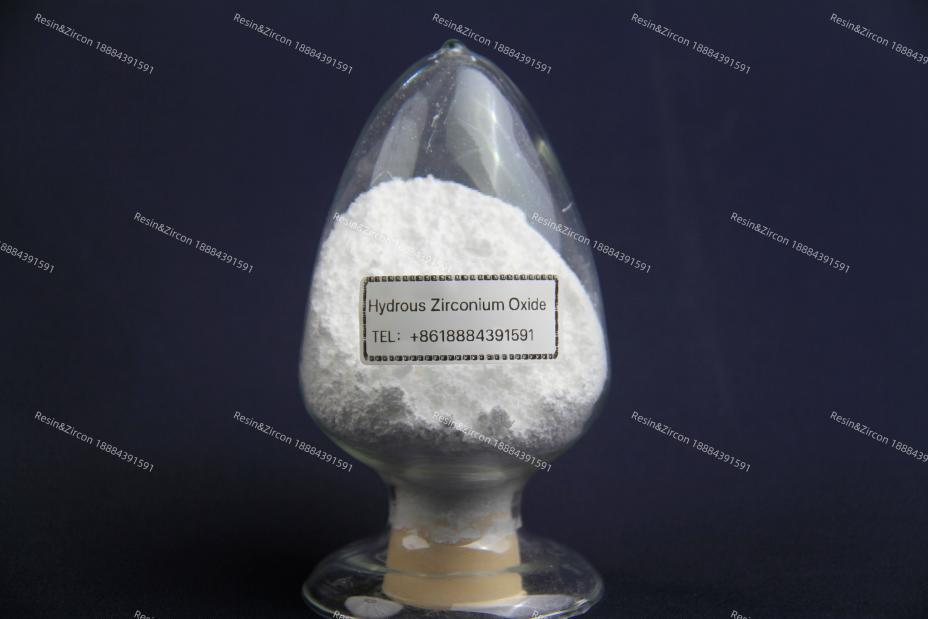Hydrous Zirconium Oxide
Hydrous Zirconium Oxide (HZO) is an inorganic material with high adsorption activity. Due to its unique surface chemical properties and structural characteristics, it has been widely used in water treatment, catalysis, medicine and other fields. The following is a detailed introduction to its product features, application examples and addition suggestions:

Application Area :
1. Hemodialysis
2. Water treatment field:
Phosphorus removal: the removal rate of low concentration phosphate (0.5 ~ 10 mg/L) can reach more than 90%, which is suitable for the treatment of eutrophicated water.
De-fluorination: under acidic conditions (pH=2~6), the adsorption capacity of fluoride ion (1~5 mg/L) can reach 36 mg/g.
Arsenic removal: The Langmuir saturation adsorption capacity of arsenate is 61 mg/g, which is suitable for groundwater remediation.
3. Industrial wastewater treatment: used for the removal of Cr (III) in electroplating and leather making wastewater to prevent its conversion into highly toxic Cr (VI).
4. Composite reinforcement: gel beads (0.1~5 mm) are made with strontium alginate to improve the solid-liquid separation efficiency and are suitable for continuous flow reactors.
5. Catalysis and medicine: as a catalyst carrier or drug sustained-release material, using its high specific surface area and surface active sites.
1. Product features:
1.1 Excellent adsorption performance
-It has high selective adsorption capacity for anionic pollutants (such as phosphate, fluoride ion, arsenate, etc.), and the adsorption capacity is significantly higher than that of traditional adsorbents (such as activated alumina, iron-based materials).
-It can maintain good adsorption effect in a wide pH range (acidic to neutral), especially suitable for micro-polluted water treatment.
1.2 Strong chemical stability
-Resistant to acid and alkali corrosion, can maintain structural stability under strong acid (pH=2) or weak alkaline (pH=9).
-It is not easy to decompose at high temperature (<500℃) and is suitable for high temperature process environment.
1.3 The problem of easy loss of nanomaterials
-Pure hydrated zirconium oxide is a nanoscale powder, which is easy to agglomerate and difficult to settle. Direct use may lead to difficulties in solid-liquid separation.
-The separation performance is often improved by immobilization techniques (e.g., gel embedding).
1.4 Reusability
-After adsorption saturation, it can be regenerated by alkali solution (such as NaOH) to restore the adsorption capacity, and the number of cycles can reach more than 5 times.
1.5 Environmentally friendly
-Non-toxic, no secondary pollution, in line with environmental protection material standards.
2. Recommended Additions
2.1 The proportion of hydrated zirconia is recommended to be 30%~50%.
2.2 20~100 g/L (gel beads), contact time ≥6 hours.
2.3 The adsorption efficiency of phosphate and fluoride ions can be improved under acidic conditions (pH=3~5).
2.4 Soak in 5% NaOH solution for 1-3 hours, and wash with water until neutral for reuse.
2.5 Avoid coexistence with strong oxidants (such as potassium permanganate), which may affect the adsorption performance.
Fixed materials should be avoided from mechanical compression to prevent structural damage

Follow WeChat


